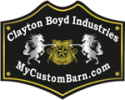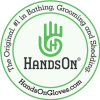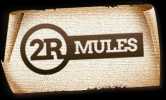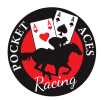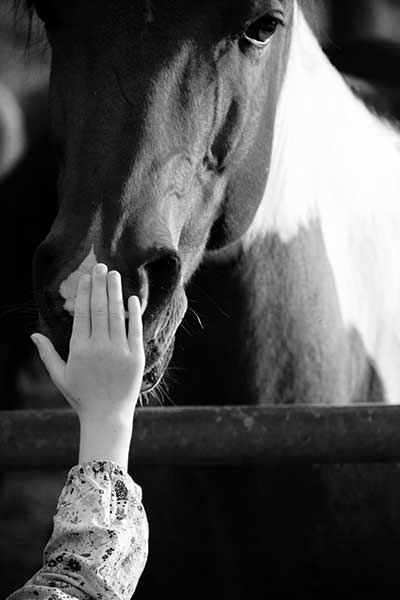
by Bob Burdekin
I would like to explain how we are continually moving forward into the area of working with horses that up to this time, has been completely ignored; and that area is emotional stress management in horses.
But before we can even discuss emotional stress management and how it affects your horse we need to look at how your horse's brain works and compare it to our own.
To start with horses do not think the same way that we do; their brain is structured in a totally different manner, and how your horse uses their brain along with your input becomes the causes of the various levels of stress that your horse may experience.
When we look at and compare the brain of the horse to that of our own, the most important area to consider is the area of the "frontal lobe".
In our brain the frontal lobe is extremely large and well-developed, for this is the part of our brain that allows us to be able to process all of the information that we receive daily and that adds to our personalities, as well as our ability to develop cognitively, or reasoning abilities.
The exact opposite is true for your horse when we compare the same area the frontal lobe of your horse's brain is much more undeveloped and therefore does not give them anything close to the ability to reason through a problem even close to the ability that you or I have.
The majority of the other sections of your horse's brain that provide movement and overall athleticism have developed in the way that our frontal brain has.
If you put your horse in a situation where they need to reason their way out of it you will most likely end up with a horse in full flight mode which will result in your horse bolting away so that it might protect itself. Not to mention the high levels of stress that can be created within that situation.
In case you might be wondering how all this comes together and interacts; it is accomplished through basically one very small area of the horse's brain. In fact, the area I am referring to is about the size and shape of an almond. That part of the brain is called the "Amygdala" which more or less is involved with your horse's emotion control area, which is directly related to your horse's emotional stress.
The emotion that is referred to here, when looking at the brain of the horse, is based in fear and rage; this emotion is not the feeling of sadness, being proud, or any other points that we might experience. It is an area of what is known as primitive in nature as well as instinctive in how it reacts when stimulated; this is where the "fight or flight" response originates.
This primitive part of the horse's brain that includes the Amygdala is part of the "limbic system" and it is this system of the brain that leads to many of your horse's unresolved issues along with where these same issues tend to be retained.
All of the factors that have affected them in the past, the ones that they could not understand or relate to are stored here and can be brought forward from time to time.
The importance of this area is that it is one of the main and controlling areas of emotional stress-production and it is that same stress that produces fear and fear produces a "flight or fight" response; so being able to relate to the true problem helps to both understand the root of the problem and give us a path to follow that will help to maintain the problem created by their emotion area response.
It is the size, development, and the way that your horse uses their frontal lobe that leads to the various levels of stress that can be created within any given situation.
Stress is a condition that develops within your horse's body and if left unchecked can lead to chronic problems.
Just as in people, when a horse does become stressed, the hormone "cortisol" is released; this hormone is often referred to as "the stress hormone" which is produced by the adrenal glands and settles within the bloodstream and the saliva of your horse.
There is a belief among certain trainer that certain bit used with a horse help to relieve stress and allow the horse to cope better with the situation that they are working through. This group refers to the use of a "Sweet Water" bit to accomplish this result. To explain, a sweet water bit is one that has untreated steel for the centerpiece, (the part that goes in the mouth), it has been shown that the untreated steel allows the horse to create a greater amount of saliva, thus allowing for the release of the stress hormone cortisol and the horse to be much more calm in stressful situations.
The cortisol hormone is picked up by various cells throughout your horse's entire body and is normally used in a positive manner to regulate your horse's metabolism, their electrolyte balance, and help to reduce any inflammation.
Although cortisol is very important to help regulate the overall health of your horse it can from time-to-time become unbalanced and that is what often leads to health issues.
When a horse has high levels of cortisol it actually weakens the horse's natural defense mechanism, their immune system, making them much more open to many problems from bacterial diseases, such as; thrush, abscesses or even rain rot.
It has been our experience that once that a major portion of emotional stress has been released we have seen additional physical problems come to light; such as lameness issues, body soreness, gait problems, as well as many other situations. We tend to believe this is the body's way of allowing the immune system to start to function at a higher level than it did before.
There are basically two levels of stress that are apparent in horses and they are; long-term stress, which is referred to as Chronic Stress and short-term stress which is referred to as Acute stress.
Understanding the difference between the two categories will help you to manage your horse's stress.
In order to help you understand the differences between the two types of stress, I will cover some of the indicators for both Acute Stress and Chronic Stress, which are:
Acute Stress Indicators
- Trembling
- Tense Muscles
- Shying
- Bolting
- High Head/Neck Carriage
- Wringing of Tail
- Pacing
- Stall Walking or Weaving
- A Change in Your Horse's Attitude
- Aggression Type Behavior
- Gastric Ulcers
- Teeth Grinding
- Skin Infections
- Colic
- Dull Coat
- Decreased Performance
Here is where it is important to know what is normal for your horse and what is out of the ordinary.
Just as people hold in indicators of stress, horses too will do the very same thing and this can be very upsetting for horse owners that are suddenly faced with their horse having health issues that seemed to have come out of nowhere.
The area of emotional stress management that we have ventured into is relatively new and we have made great progress with many different horses in many different situations.
In the process of helping horses, their owners, and returning horses to a level of performance that seemed to have fallen by the wayside we have opened the door to many past problems that have seemed to be unreachable in the past.
If you have a horse that you feel would benefit from our services, please contact us and we would greatly appreciate the opportunity to talk to you about your horse and determine how we would be able to help both you and your horse.
About the Author

My work with horses and owners is dedicated to the thousands of horses that I have had the distinct pleasure to meet. learn from and allowed into their lives. That acceptance has given me the insight that is necessary for the understanding of their world and how I had to alter my thoughts and actions to become the same as theirs. These horses started out as my clients, became my friends, then my teachers and finally my mentors. For that, I am forever grateful. Learn more about Bob and subscribe to his blog at http://www.newwavetherapy.com
This article originally appeared on EZine and is published here with permission.
You can find more interesting articles in our section on Health & Education.













